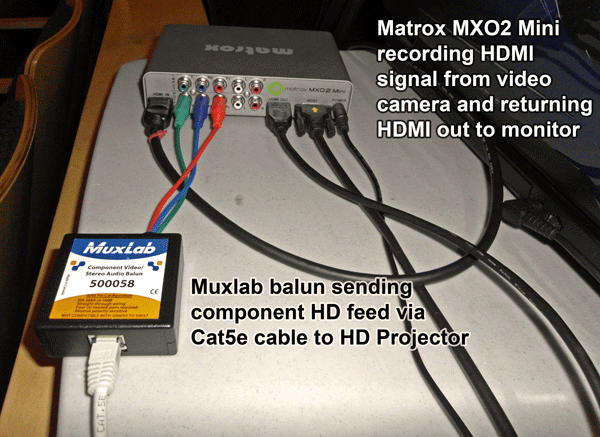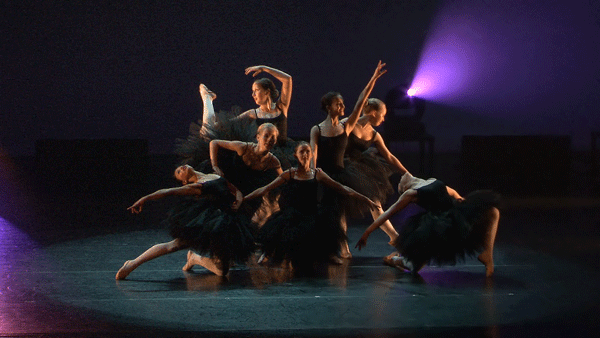Navigating New Technologies and Legacy Workflows for Live Productions
It takes time and money to replace acquisition, editing, and delivery equipment to conform to new and ever-changing standards, and often there are elements of our production gear or workflow that get upgraded while others get left behind. Here Shawn Lam provides some tips to combat these issues.
Affordable HD Switchers
So what does the future have in store that will restore the rightful balance back to video? Affordable HD switchers is the answer. One that has caught my eye recently is Blackmagic Design's ATEM video switcher line, which includes the $995 ATEM Television Studio and the more capable but still value priced $2,495 ATEM 1 M/E model. Blackmagic Design is able to reduce the barrier to entry so dramatically because a software broadcast panel (which you'd install on a laptop) comes standard with the switcher, while a hardware broadcast panel adds $4,995. Watch this space for my upcoming ATEM video switcher reviews.

Two ways of outputting the feed you need
Bringing the entire production into SD will ensure there are enough pixels to go around for both the computer generated presentation and live video, even if the computer input needs to be pillar-boxed.
Transition Codecs
HDV video cameras were an improvement on their SD predecessors, especially as the demand to produce widescreen DVDs increased as HDTVs became more and more affordable and popular. But it was almost as if the manufacturers skipped a step when they released HDV video cameras and that is because largely they did. With a few exceptions, very few native widescreen SD-only video cameras were ever produced and hybrid HDV/DV video cameras became the standard. The SD functionality worked very nicely and the intraframe SD-DV codec didn't change much for editors. HDV was another story. In order to fit an HD signal on the same tape MiniDV tape, at the same data rate, manufacturers made several compromises. The intraframe SD codec became a longGOP (group of pictures) MPEG-2 codec, with an algorithm referencing one complete "I" frame only once every 15 incomplete frames. The longGOP recording required higher-quality tapes to minimize the occurrence of half-second long drop-outs and the resolution was an anamorphic 1440x1080.
Yes, the HDV version looked nice when delivered to a 720p or 1080p web codec, but because the clips were limited by the lossy HDV acquisition codec, it was very common in web clips created from HDV footage to see a blocky "pixel halo" around moving people and objects. Unfortunately, the combination of the HDV codec and the early CMOS video cameras produced video high in blocky compression artifacts and video noise, which made transfer to DVD a problem, especially compared with DVDs authored from video from the same video camera but filmed in SD.
The problem is that the delivery DVD codec confuses all the additional noise and compression artifacts as detail and this further compounds the problem. The whole thing is a mess and this causes the codec to fail. The codec tries to compensate by allocating more and more of its precious bitrate to reproduce the noise, at the expense of the real detail, but just can't. The result is a detail-less video with exaggerated noise and compression artifacts that look nothing like the HD image before it starts its compression path in the video camera.
Part of the solution is to reduce the noise. In-camera, this means limiting the use of gain and, in post, it means not increasing the brightness in the noise-prone shadows. Sometimes this isn't enough and you need to remove them noise. I've been very happy with Neat Video as a noise removal plug-in. I use it in Adobe Premiere Pro and the results are very impressive. It's very intuitive to use on a basic, virtually automatic level, and those who want deeper customizing ability can switch to the advanced mode and further train the plug-in to differentiate noise from detail. The downside is that it does take a long time to render, even my Intel Core i7 920 and 2600K editing systems, but for $99.90 I consider it a great value and must-have plug-in. Supported NLEs include Premiere Pro, Premiere Elements, After Effects, Apple Final Cut Pro 7 (no word at this writing on FCP X support), Final Cut Express, Motion, Sony Vegas Pro, and Pinnacle Studio.

Splitscreen sample of the Neat Video plug-in in action, removing noise from dance recital footage prior to export